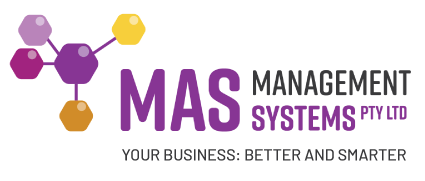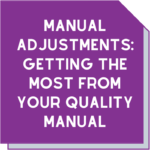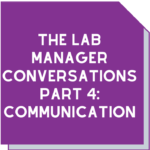Solving your communication catastrophes
 You might have heard about the latest Sydney-centric communication stuff-up. It involves the Spaghetti Junction of the Rozelle Interchange. One reason for the traffic chaos came from poor signage.
You might have heard about the latest Sydney-centric communication stuff-up. It involves the Spaghetti Junction of the Rozelle Interchange. One reason for the traffic chaos came from poor signage.
This miscommunication meant that there were extraordinary traffic jams and hours of lost productivity!
It shows how a lack of communication can lead to frustration. It’s an important reminder about the importance of good communication!
Reading from the same map
Think about your quality manual as the guidebook for your organisation.
It should explain the goals of the business and the systems put in place to ensure quality outcomes. Your manual should reflect your quality assurance program. Employees should be able to find and understand their role in ensuring the goals of the organisation within the pages of this document.
Does this sound like your quality manual? Is it simple to find and navigate? Or is it in a glass cabinet somewhere and dusted off for special occasions, like visits from customers and auditors?
A quality manual should be a dynamic document, regularly reviewed and updated for the changing needs of the business and its staff.
Redirecting traffic
Since this is a document that can be updated and altered, employees should be encouraged not only to read it, but to give feedback on the contents.
This means that if someone’s role has changed or their responsibilities altered, this should be reflected in the manual.
Similarly, if a policy or procedure changes, make sure everyone knows, not just the people you think may be affected. An intranet announcement plus an email could be sufficient.
If the change is major, consider having employees sign off on them to ensure they’re read and understood. Depending on the scope of the change, training on how the policy or procedure will affect employees may also be required.
Giving the right directions
The primary purposes of a quality assurance program are to produce consistent products or services, improve customer satisfaction, reduce internal costs and reduce waste.
However, the value of employee efficiency and loyalty shouldn’t be overlooked. Employees need to understand the direct link between their work and the outcomes for customers. A business with well-trained, loyal employees who have pride in their work and the business they work for, is gold.
Publicising your well-implemented quality program is satisfying for employees but also demonstrates your quality commitment to customers.
Untangling the traffic snarls
Transport for NSW is now looking to implement several changes, like added lanes and better signage. But it may not be enough. Some design flaws should have been addressed in the early planning stages.
Workplaces can likewise be affected by similar issues. A key way of preventing chaos, especially when introducing new ways of working, is by looking at areas like systems for training, onboarding new staff, and mentoring programs within the organisation.
Here are some other strategies for communicating within an organisation.
A knowledge bank
This is almost like Google for your business! It’s best to develop this on an intranet system to ensure information is captured and retained.
A knowledge bank is unique to your organisation and can contain anything that employees may find useful. This could be FAQs, anecdotes from longer-serving staff members, and Q&A sections. You can include anything that employees would share whether in formal meetings or coffee breaks. The most important feature is to make it easy to access, add information, and search.
Internal newsletter
When you’re busy, it’s easy to lose track of what’s happening within your company. An internal newsletter can be an informal round-up of news and communications. It can include highlights from each department plus an overview from senior management. Experiment with the frequency of these – weekly, monthly – and always include them on the intranet.
Noticeboards
The humble noticeboard in the break room has a valuable place in communicating with staff. Whether directing employees to new information on the intranet or encouraging them to add their own news to the knowledge bank, people will often stand and read bright, brief messages while dunking their tea bag…
A stay interview
While exit interviews may be a familiar concept, a stay interview probably isn’t. A manager or your HR people can carry out this process.
The purpose is to discuss with employees what they like and dislike about their jobs with the goal of retaining good staff. Make this clear to the employee up front.
Plus let them know that if there’s a problem, the person conducting the interview wants to be part of the solution.
How can we help?
MAS provides a comprehensive set of resources to support your business. And we’re very good at communication!
We’ll work with you to ensure your quality manual reflects your business.
We’ll help you prepare for external audits or assessments.
And we can provide training to your staff on best business practices and improvements.
Email info@masmanagementsystems.com.au or phone Maree on 0411 540 709 for a confidential discussion.
Let us help you work better and smarter!





